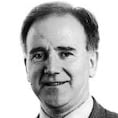For Irish people much of the language and symbolism of repentance used by Pope Francis on his “penitential pilgrimage” to Canada this week will be familiar. It will be a reminder, too, of his strong response to a meeting with eight survivors of abuse at the papal nunciature in Dublin almost four years ago.
So moved was he by the experience, he was delayed an hour in getting to Croke Park that Saturday evening for a celebration of the World Meeting of Families and, later, he rewrote his sermon for the papal Mass in the Phoenix Park the following day.
In that sermon he asked for forgiveness for “the abuses in Ireland, abuses of power, conscience and sexual abuse perpetrated by those with roles of responsibility in the church”. He asked “for forgiveness for those places of exploitation of manual work, that so many young women and men were subjected to,” and “in a special way we ask pardon for all the abuses committed in various types of institutions run by male or female religious, and by other members of the church”.
This week he is in Canada to ask forgiveness from its indigenous peoples, particularly the First Nations, Métis and Inuit survivors of residential schools run by Catholic religious congregations there.
Protestant churches face a day of reckoning with North’s inquiry into mother and baby homes
Pat Leahy: Smart people still insist the truth of a patent absurdity – that Gerry Adams was never in the IRA
The top 25 women’s sporting moments of the year: 25-6 revealed with Mona McSharry, Rachael Blackmore and relay team featuring
The pontiff’s widely anticipated apology came during a Monday morning visit to the community of Maskwacis, Alberta — the first formal event of his one-week tour after landing in the western province on Sunday.
“I am sorry. I ask for forgiveness, in particular, for the ways in which many members of the church and of religious communities co-operated, not least through their indifference, in projects of cultural destruction and forced assimilation promoted by the governments of that time, which culminated in the system of residential schools,” he said, with nearly 2,000 survivors of the residential school system in attendance.
One of those survivors, Maureen Belanger told CBC TV: “It was very emotional. I don’t know. Do we celebrate? It was powerful to hear the leader of the Catholic Church ask us ... to forgive him. At the same time, you can’t forget all the spirits that are not at rest.”
Separated from families
For more than a century those schools forced the integration of indigenous youth into Euro-Canadian culture, separating them from their families. Many of the children suffered neglect and abuse, causing long-term problems. Overall, between the 19th and 20th century, some 150,000 First Nation, Inuit and Métis children were forced to attend the schools.
In 2015 a seven-year inquiry by the Truth and Reconciliation Commission of Canada concluded that the schools were designed “not to educate” the indigenous children “but primarily to break their link to their culture and identity”, and the operation of the schools “can best be described as ‘cultural genocide.’ ”
The commission concluded that more than 3,000 children died while attending these schools, due to neglect, disease and abuse.
Familiar where Irish people are concerned. As was the discovery in May 2021 of dozens of unmarked graves in the grounds of the Kamloops Indian Residential School in British Columbia.
Last April, Pope Francis met representatives of the First Nations, Inuit and Métis peoples at the Vatican and asked forgiveness for the “deplorable conduct of those members of the Catholic Church”, emphasising that what he had heard had made him feel both indignation and shame.
“Without real indignation, without historical memory and without a commitment to learning from past mistakes, problems remain unresolved and keep coming back,” he said. He reiterated “his sorrow and solidarity for the harm they have suffered” during the Angelus in Rome last Sunday week.
Due to Canada’s size, the pope, who will be transported by wheelchair due to ongoing problems with a ligament in his right knee, will base his six-day visit around cities most associated with the three indigenous peoples concerned. These are Edmonton, Québec City and Iqaluit.
Edmonton in Alberta is home to the second-largest number of indigenous people living in Canadian urban areas. Twenty-five of the residential schools were located in Alberta.
Iqaluit, with a population of 8,000 people, is home to the largest number of Inuit, members of the indigenous nation inhabiting Canada’s Arctic regions. Pope Francis was personally invited by Inuit delegates to visit the north during their meetings at the Vatican this year.
Québec City is the hub chosen for those indigenous peoples of the east who wish to see the pope. The area is also home to St Anne-de-Beaupré, one of the oldest and most popular pilgrimage sites in North America, attracting indigenous peoples and others from across Canada and around the world every year. — Additional reporting: Reuters










